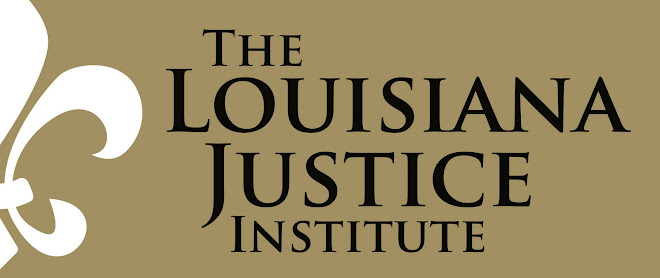 Community leaders from throughout Orleans Parish came together to develop a community plan that reflects the changing demographics in the city and the shift in population. We believe that New Orleans Parish City Council Districts would provide greater opportunities for voters to elect candidates of choice if the districts are seven single-member districts, with no at-large districts, rather than the current five single-member and two at-large districts. This change reduces the ideal population in each district to 49,118 and creates greater equity for all communities in Orleans Parish.
Community leaders from throughout Orleans Parish came together to develop a community plan that reflects the changing demographics in the city and the shift in population. We believe that New Orleans Parish City Council Districts would provide greater opportunities for voters to elect candidates of choice if the districts are seven single-member districts, with no at-large districts, rather than the current five single-member and two at-large districts. This change reduces the ideal population in each district to 49,118 and creates greater equity for all communities in Orleans Parish.The Home Rule Charter of the City of New Orleans was adopted in 1954 and has been amended many times but never to address the fact that the majority of the current population, which is 67% people of color, could not vote and certainly did not give input to the number of districts written in the Home Rule Charter. "In 1954 think about what was going on in this country, particularly in the South, the heat of the civil rights movement was underway, "separate but equal" in public education was ruled unconstitutional, and New Orleans City Council was still 22 years away from electing its first African American to the city council. It is concerning that we have not addressed this issue with the Home Rule Charter to truly give voice to all citizens within the Parish and fall in line with cities of similar size and demographics," said Katherine Prevost, President of the Upper Ninth Ward Bunny Friend Neighborhood Association.
This rearranging of political boundaries to accommodate the shifts in growing populations will impact elections and the resulting governmental policy outcomes for the next ten years. Community leaders researched other cities with population sizes and demographics comparable to New Orleans including Atlanta, Cleveland, Newark, St. Louis and Cincinnati revealing that numbers of citizens represented in each district averages from a low of 11,403 (St. Louis) to a high of 32,993 (Cincinnati). Orleans Parish has less districts than the other cities indentified, ranging from a low of nine (Newark and Cincinnati) to a high of 28 (St. Louis). These numbers show that having only seven council members in Orleans Parish results in less representation than citizens in comparable cities.
"It is important to think about how these large districts affect the ability of citizens to elect a candidate of choice. It also impedes the ability of candidates with small campaign coffers to compete effectively with districts larger than some House and Senate Districts within the state of Louisiana," said Norris Henderson, President of V.O.T.E
"We encourage our community and most important our city council members to think outside the status quo to shift paradigms to a council where members represent smaller communities, better," said Tracie Washington of Louisiana Justice Institute.
Vincent Sylvain of the Louisiana Unity Coalition explained, "Additionally, these smaller districts would likely expand the pool of potential candidates since the cost of getting ones message out will also decrease because of the smaller geographic coverage area. This plan has something for everyone; for the incumbents these would technically be new seats, not subjecting them to the current term limits; for challengers the new lines would offer greater chances of victory; for the people, it would bring their representation closer to home."
Though not an exhaustive list of community leaders involved in the development of this plan, the following organizations worked collaboratively to develop this plan: Advancement Project, Greater New Orleans Organizers Roundtable, Kwanza Abdul-Khaliq, Louisiana Justice Institute, Louisiana Unity Coalition - National Coalition on Black Civic Participation, One Voice Louisiana, Rosedale Neighborhood Association, Upper Ninth Ward Bunny Friend Neighborhood Association and V.O.TE. These groups have been working together through a series of community meetings with local and national expertise to develop an equitable map representative of their constituents.
On Tuesday, June 21, members of the committee met with NOLA Beez, an ethnic news hub project of New America Media's Digital Divide Initiative to express their concerns in regards to the lack of attention from mainstream media to the affect redistricting could have on minority communities in Louisiana. The aim of NAM's Initiative is to assist ethnic media in improving coverage of their communities and other ethnic groups through citizen journalism and online multimedia development.
"Issues such as those raised around redistricting are the type of unifying efforts which could open up new lines of communication among and between ethnic and immigrant communities" said Sandy Close, NAM's executive director. "It is our intent to help such causes reach a broader audience."
Rosanna Cruz, representing Puentis added, "The redistricting process in Baton Rouge was flawed . . . it resulted in maintaining power base when it should have been expanding the power base of minority communities."
Local media partners participating in the NAM workshop included representatives of El Tiempo New Orleans, Jambalaya News, Louisiana Weekly, Louisiana Data News Weekly, New Orleans Agenda, Ngoc Lan Thoi Bao, NOLA.Tv, Xavier University, and local attorney Nicole Shepherd.
The citizen group will present their alternative plan to the New Orleans City Council during the public hearing on final Council District Redistricting Maps at the 5:00 PM meeting in Council Chambers at City Hall on Wednesday, June 22, 2011.
A link to the alternative map may be found at this link.

No comments:
Post a Comment